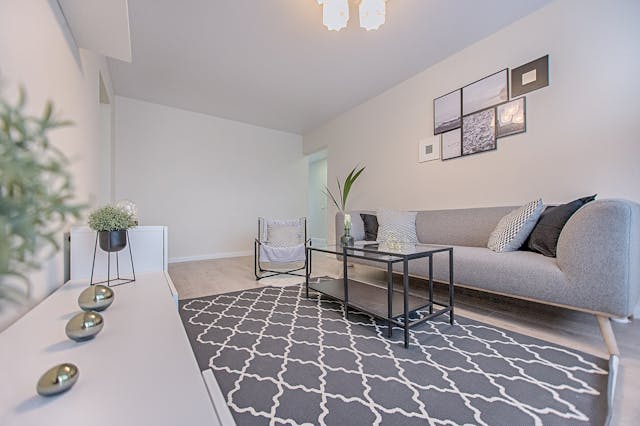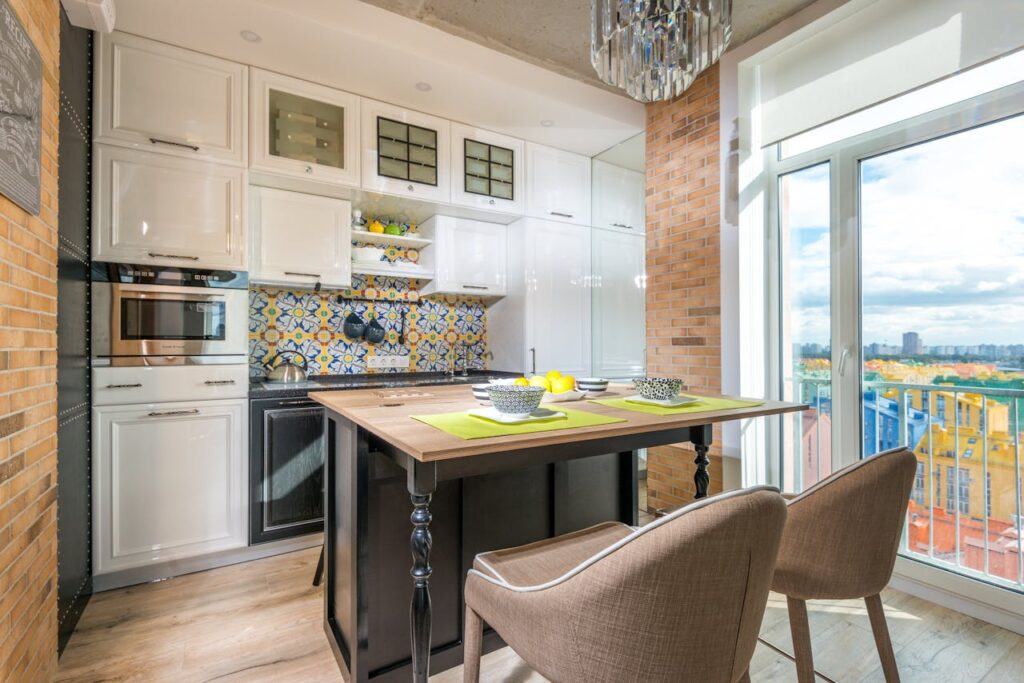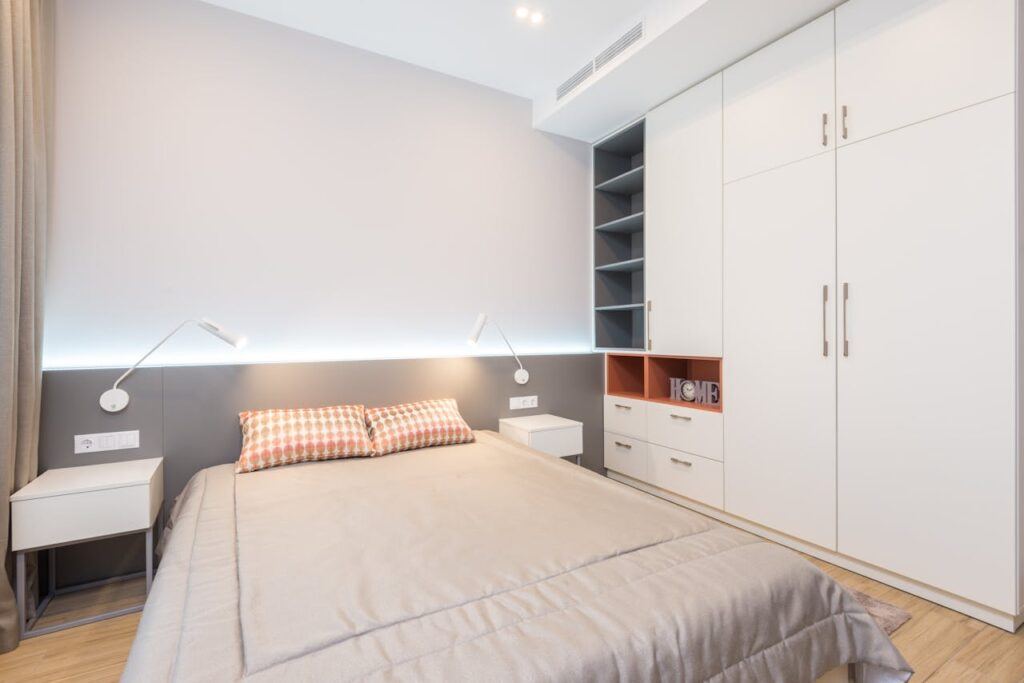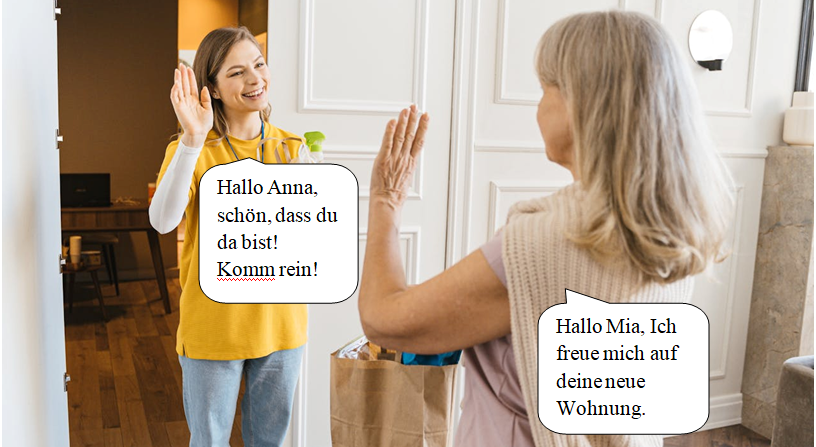German A1 Lesson – Was ist das? – Meine neue Wohnung
Are you starting to learn German and want to build your everyday vocabulary? This German A1 lesson for beginners will help you master the phrase “Was ist das?” and use it to describe your surroundings. With the topic “Meine neue Wohnung”, you’ll practice essential German words for home objects, rooms, and basic sentence structure. Through simple dialogue and useful examples, this German A1 lesson is ideal for anyone looking to improve their A1 German conversation skills and confidently discuss their home in German.
Thank you for reading this post, don't forget to subscribe!Table of Contents
Dialogue: Meine neue Wohnung (My New Apartment)
German A1 Vocabulary – Meine neue Wohnung
German A1 Phrases: Meine neue Wohnung
Grammar: Verbs “sein”, “finden”, “stehen”
Colors: die Farben
Definite articles: der, die, das
Indefinite articles: eine, ein, eine, kein, keine
Singular and plural
Exercises
Dialogue: Meine neue Wohnung
Mia hat eine neue Wohnung. Ihre beste Freundin Anna besucht sie.

Anna: Hallo Mia!
Mia: Hallo Anna, willkommen! Wie geht’s dir?
Anna: Danke, gut. Und dir?
Mia: Auch gut, danke. Komm rein! Das ist meine neue Wohnung.
Anna: Oh, wie schön! Was ist das?
Mia: Das hier ist das Wohnzimmer. Schau, hier sind das Sofa und der Sessel. Dort ist der Couchtisch, und hier ist der Fernseher.
Anna: Die Lampe finde ich sehr schön!

Anna: Und wo ist die Küche?
Mia: Die ist links. Sie ist klein, aber hell.
Anna: Stimmt, das große Fenster ist super.
Mia: Ja, und schau mal – der Herd ist ganz modern. Der Kühlschrank steht daneben.
Anna: Und der kleine Tisch mit den Stühlen passt perfekt hierher.

Anna: Wo ist dein Schlafzimmer?
Mia: Gleich nebenan, rechts. Hier ist das Bett, und daneben steht der Kleiderschrank. Wie findest du es?
Anna: Es ist sehr gemütlich!
Mia: Ja, ich mag es auch.
Anna: Deine Wohnung ist wirklich schön. Und wo ist das Bad?
Mia: Das ist dort drüben, am Ende vom Flur.
German A1 Lesson Vocabulary – Meine neue Wohnung
| German | English |
| die Wohnung | apartment |
| das Wohnzimmer | living room |
| das Schlafzimmer | bedroom |
| die Küche | kitchen |
| das Bad | bathroom |
| der Flur | hallway |
| das Sofa | sofa |
| der Couchtisch | coffee table |
| der Herd | stove |
| der Kühlschrank | refrigerator |
| der Tisch | table |
| der Stuhl (die Stühle) | chair (chairs) |
| das Bett | bed |
| der Schrank | wardrobe |
| gemütlich | cozy |
Phrases: Meine neue Wohnung
| German | English |
| Willkommen! | Welcome! |
| Wie geht’s dir? | How are you? |
| Danke, gut. Und dir? | Thank you, good. And you? |
| Auch gut, danke. | I’m good too, thank you. |
| Komm rein! | Come in! |
| Schau (mal)! | Look (at this)! |
| Das ist meine neue Wohnung. | This is my new apartment. |
| Die Lampe finde ich sehr schön! | I think the lamp is very nice! |
| Gleich nebenan, rechts. | Right next door, on the right. |
| Daneben steht der Kleiderschrank. | The wardrobe is next to it. |
| Es ist sehr gemütlich! | It’s very cozy! |
| Ja, ich mag es auch. | Yes, I like it too. |
| Deine Wohnung ist wirklich schön. | Your apartment is really beautiful. |
| Das ist dort drüben, am Ende vom Flur. | It’s over there, at the end of the hallway. |
Grammar: Verbs “sein“, “finden”, “stehen” – German A1 Lesson
| sein (to be) | finden (to find, to think) | stehen (to stand) |
| ich bin – I am du bist – you are er/sie/es ist – he/she/it is wir sind – we are ihr seid – you (plural) are sie/Sie sind – they/you (formal) are | ich finde – I think du findest – you think er/sie/es findet – he/she/it thinks wir finden – we think ihr findet – you (plural) think sie/Sie finden – they/you (formal) think | ich stehe – I stand du stehst – you stand er/sie/es steht – he/she/it stands wir stehen – we stand ihr steht – you (plural) stand sie/Sie stehen – they/you (formal) stand |
Usage examples:
- sein:
Wo ist der Tisch? – Er ist in der Küche. (Where is the table? – It’s in the kitchen.)
Wo ist das Sofa? – Es ist im Wohnzimmer. (Where is the sofa? – It’s in the living room.) - finden:
Wie findest du den Kühlschrank? – Er ist sehr modern. (What do you think of the refrigerator? – It’s very modern.)
Wie findest du das Bett? – Es ist sehr groß. (What do you think of the bed? – It’s very big.) - stehen:
Wo steht der Tisch? – Er steht in der Küche. (Where is the table? – It’s in the kitchen.)
Wo stehen die Stühle? – Sie stehen im Wohnzimmer. (Where are the chairs? – They are in the living room.)
Colors / die Farben

- Das Bett ist gelb. (The bed is yellow.)
- Der Kühlschrank ist grün. (The refrigerator is green.)
- Das Sofa ist rot. (The sofa is red.)
Definite Articles: der, die, das – German A1 Lesson
In German, we use definite articles before nouns:
- der (masculine)
- die (feminine)
- das (neuter)
- die (plural)
Examples with living things:
- Der Vater ist im Arbeitszimmer. (The father is in the study.)
- Die Mutter ist in der Küche. (The mother is in the kitchen.)
- Das Kind ist im Kinderzimmer. (The child is in the children’s room.)
- Die Großeltern sind im Wohnzimmer. (The grandparents are in the living room.)
Examples with objects:
- Der Herd steht in der Küche. (The stove is in the kitchen.)
- Die Lampe ist im Wohnzimmer. (The lamp is in the living room.)
- Das Bett ist im Schlafzimmer. (The bed is in the bedroom.)
Indefinite Articles: eine, ein, eine, kein, keine – German A1 Lesson
Indefinite articles can replace definite articles in singular:
- ein (masculine, neuter)
- eine (feminine)
- kein (negative form for masculine, neuter)
- keine (negative form for feminine, plural)
Examples:
- der Kühlschrank – ein Kühlschrank – kein Kühlschrank (the refrigerator – a refrigerator – no refrigerator)
- die Lampe – eine Lampe – keine Lampe (the lamp – a lamp – no lamp)
- das Bett – ein Bett – kein Bett (the bed – a bed – no bed)
Was ist das?
Was ist das?
– Das ist eine Lampe.
Die Lampe ist blau.
Sie ist sehr modern.
– Ist das ein Sessel?
Nein, das ist kein Sessel. Das ist ein Sofa.
Oh, das Sofa ist sehr klein.
Singular and Plural – German A1 Lesson
Nouns can have different forms in plural. Here are some examples:
| Singular | Plural | Groups of Plural |
| das Zimmer der Vatter die Mutter | die Zimmer die Vätter die Mütter | – -(ä,ö,ü)- |
| das Sofa | die Sofas | -s |
| das Regal der Herd der Stuhl der Schrank | die Regale der Herde die Stühle die Schränke | -e -(ä,ö,ü)-e |
| die Lampe das Bett die Wohnung | die Lampen dei Betten die Wohnungen | -n -en |
| das Kind das Buch | das Kinder das Bücher | -er -(ä,ö,ü)-er |
| die Eltern die Großeltern | These nouns do not have a singular form. |

